On View
Unsung Women Fashion Designers Finally Get to Strut at the Met
"Women Dressing Women" is on view at the Metropolitan Museum of Art through March 3, 2024.
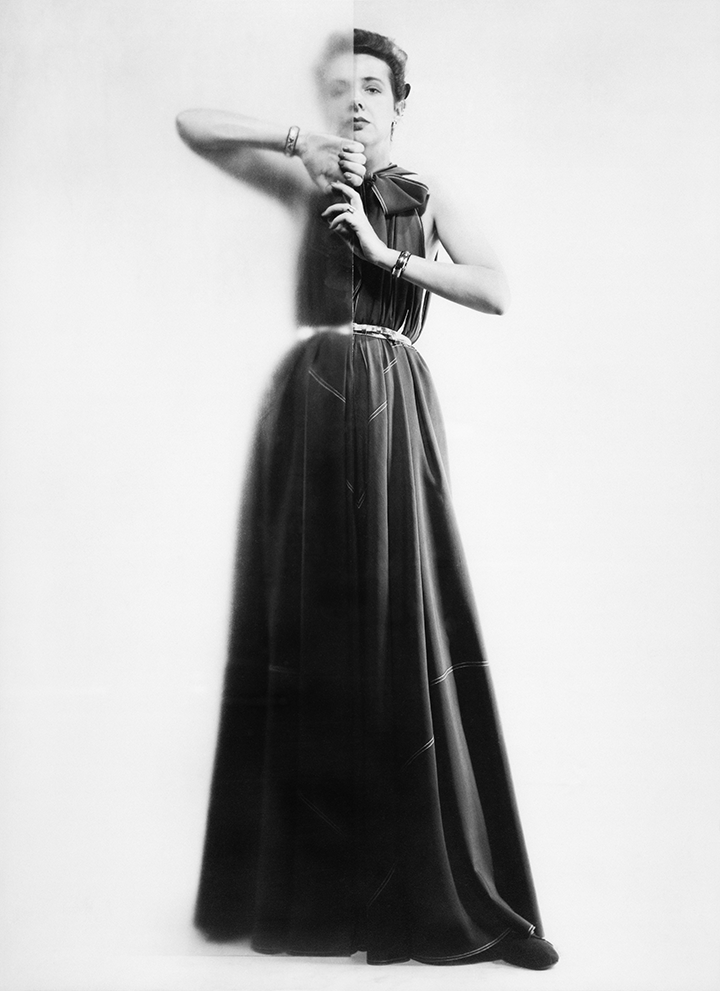
"Women Dressing Women" is on view at the Metropolitan Museum of Art through March 3, 2024.

Raquel Laneri

I don’t normally think of my nonna when I go to fashion exhibitions. Museums tend to vaunt the “genius” designers, the couturiers, or maybe the socialites or celebrities who wear their creations. My grandmother, by contrast, worked in a factory as a seamstress in Rockaway, Queens. She spent all day cutting jackets, stitching trousers, and sewing dress patterns for someone else’s label. Then she went home and fashioned garments for her three children.
Actually, many women in my family made clothes: they crocheted pink sweaters and baby bonnets, whipped up strawberry-print jumpers on sewing machines, embroidered fancy collars. Sewing gave them agency—a way to express their creativity, clothe their loved ones, or make money in a country where they didn’t speak the language.
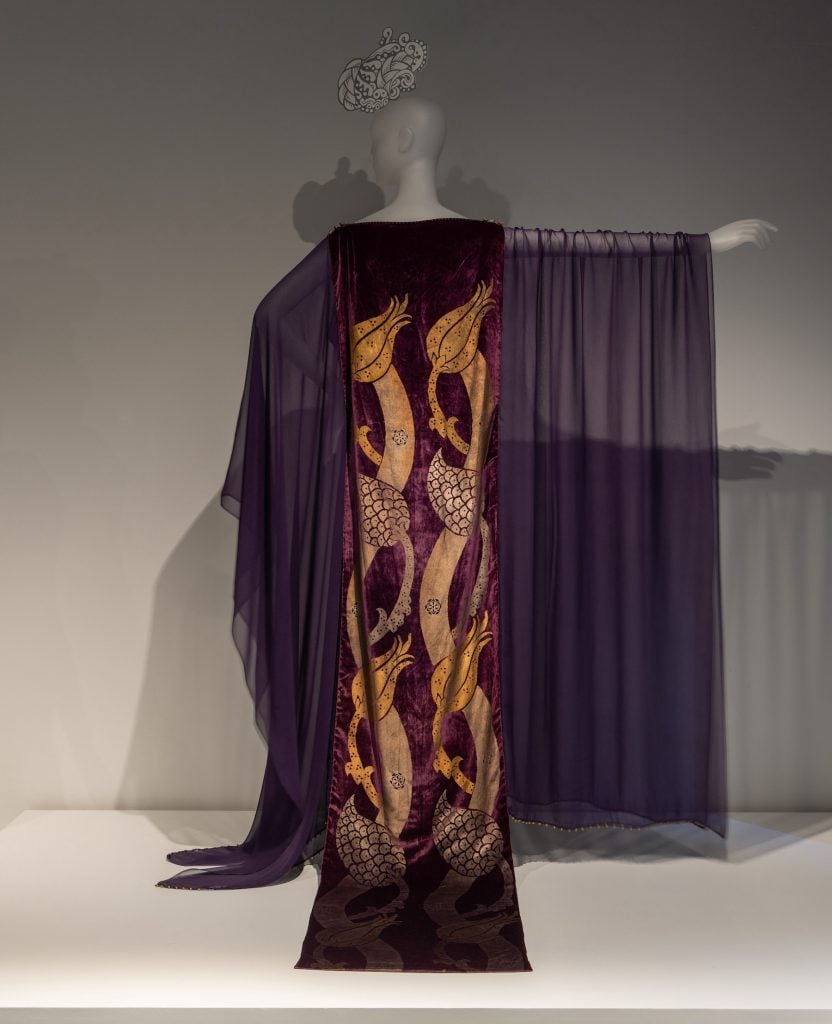
Gallery view, “Agency: Liminal Spaces of Fashion.” “Theodosia” tea gown by Maria Monaci Gallenga, ca. 1925. Photo: © The Metropolitan Museum of Art.
I felt the spirit of all these women in my life as I walked through “Women Dressing Women,” a terrific new exhibition at the Metropolitan Museum of Art’s Costume Institute. The show, on view through March 3, 2024, features 80 objects by 70 artists from the Costume Institute’s collection, from the famous—a Modernist black-and-cream Chanel suit from the 1920s—to the forgotten—a wonderfully weird plum velvet tea gown with sheer sleeves that hang like curtains from the Italian artist Maria Monaci Gallenga, who began making clothes for herself in 1910.
It also honors the often unsung, often unacknowledged ways that women have interacted, and in some ways shaped, the fashion industry. “There were some discoveries,” said Karen Van Godtsenhoven, who curated the show with Mellissa Huber. “As we still look at our collection critically and want to interrogate why some designers have been less visible in the past.”
The curators wanted to illustrate not only “the significance of women to fashion,” as Huber put it, “but in turn the significance of fashion to women.” “Women Dressing Women” opens with the Holy Trinity of female couturiers. A razzle-dazzle explosion of sparkling dresses that proves women can do showstopping design just as well as men.
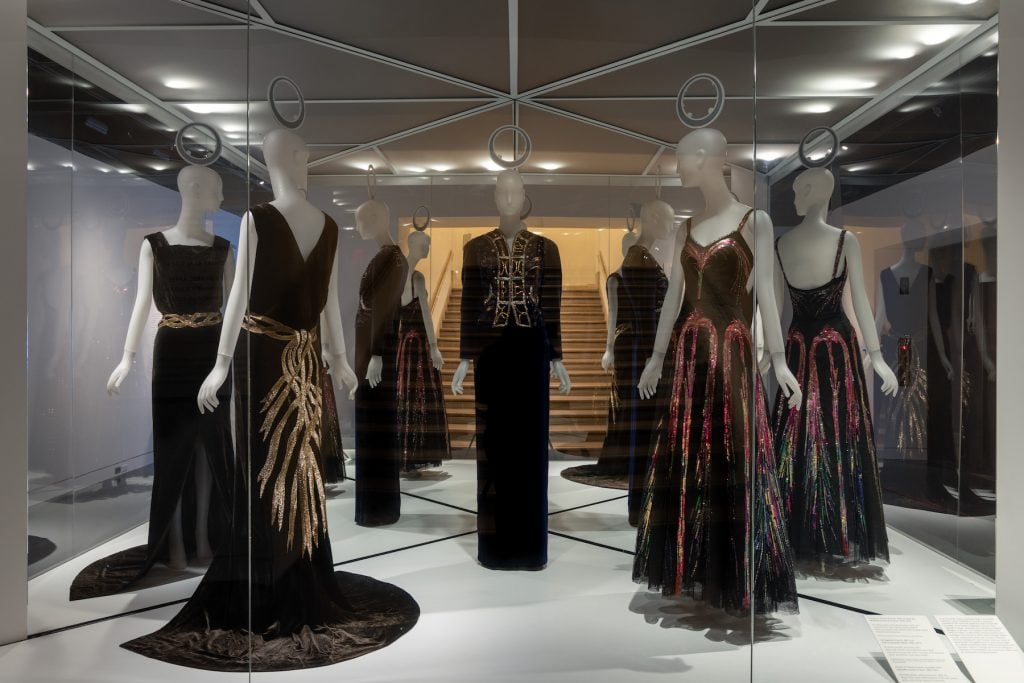
Gallery view: Left, Evening dress by Madeleine Vionnet, 1924-25; center: Evening jacket, Elza Schiaparelli, 1937; right: Evening dress, Gabrielle Chanel, 1928-39. Photo: © The Metropolitan Museum of Art.
There’s a slinky chocolate silk gown embroidered with shimmering gold thread from Madeleine Vionnet, the virtuosic technician credited with pioneering the bias cut dress in 1926; a star-studded blue velvet jacket from Elsa Schiaparelli, the flamboyant Surrealist; and a black tulle confection shot through with sequin fireworks by the one-and-only Coco Chanel.
That out of the way, the show then resumes chronologically. It starts with the countless anonymous dressmakers stitching custom wardrobes for clients: clothes filled with artistry but without a label.
That changed in the turn of the 20th century, when the skilled seamstresses, model-makers, and salespeople at these workrooms began opening their own prestigious fashion houses.
In the years between World War I and World War II, women ruled Parisian haute couture, churning out corsetless, loose-fitting dresses for liberated ladies like themselves. “Fashion was one of the first industries open to women,” Van Godtsenhoven said. “There’s this clichéd idea that fashion is just dresses or it’s frivolous, but in a very structural way, it’s given salary and a stable work life to women,” she added. “And I think there is also a connection between fashion and the larger feminist movement, because it’s really about women’s lives. There is a very big synergy between the progress women make in society and in fashion.”
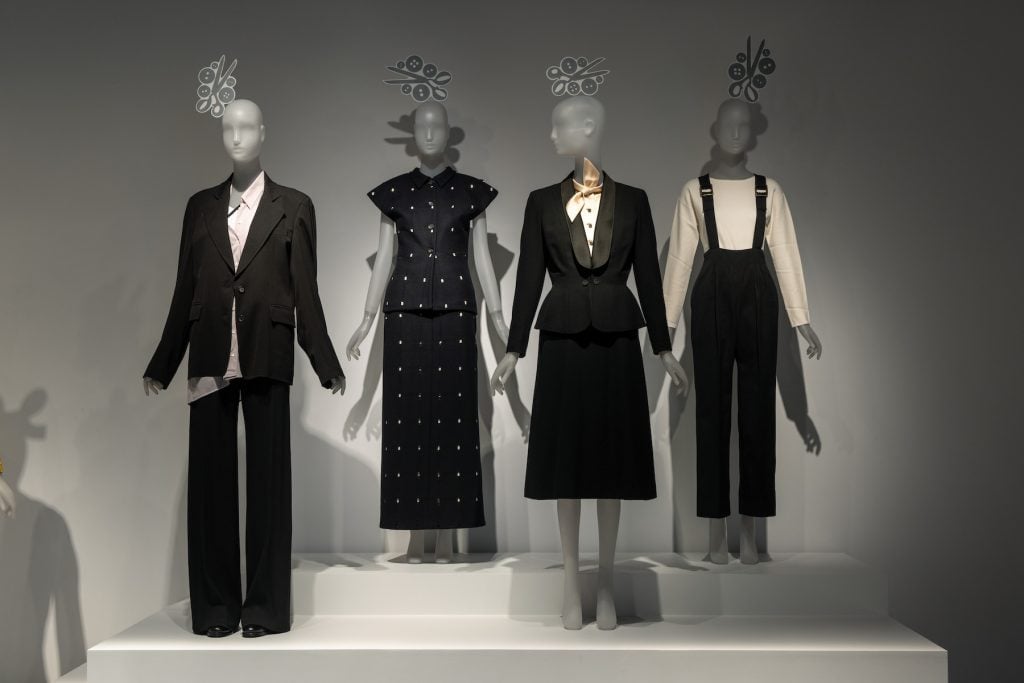
Gallery View, “Agency: Appropriating Menswear.” Photo: © The Metropolitan Museum of Art.
The Met has a trove of treasures from these women-led couture houses, many long-shuttered. Lucille—the label that self-taught dressmaker Lucy Duff-Gordon founded after her husband abandoned her and their young daughter—fabricated airy confections of silk chiffon. Callot Soeurs, helmed by a quartet of sisters who turned their lingerie and antique lace shop into a couture house, took inspiration from Eastern dress for their sumptuous, luxurious designs. The forgotten label Premet launched its sweet, tomboyish little black dress—dubbed “la garçonne”—in 1923, three years before Chanel took credit for the style.
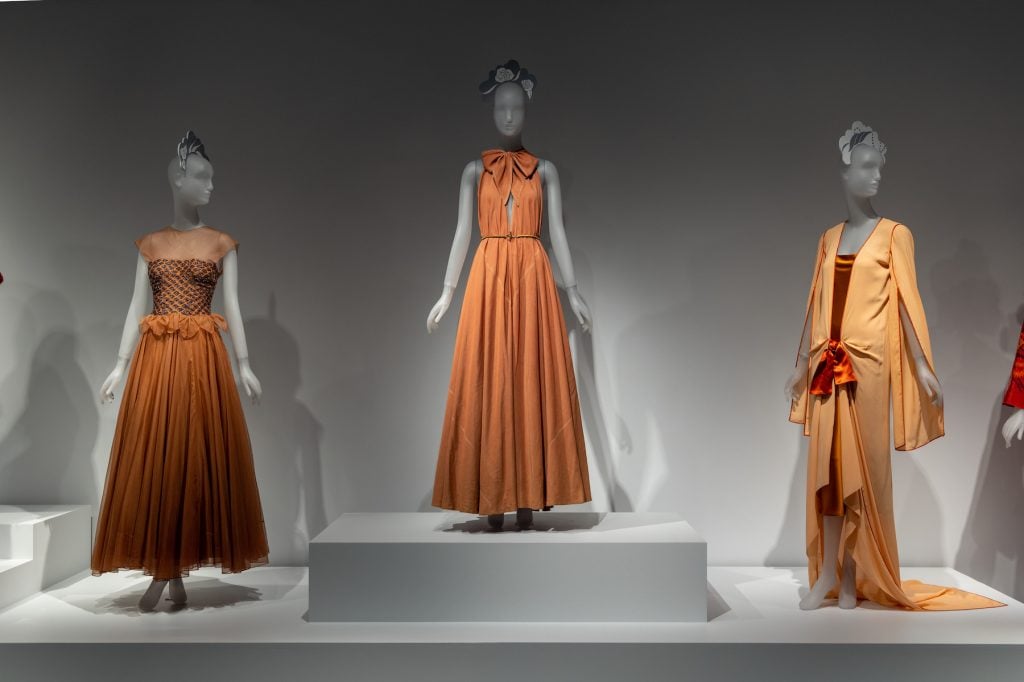
Gallery view, “Agency.” Left: Evening dress by Pualine de Rothschild for Hattie Carnegie Inc.; center “Future dress” Claire McCardell, 1945; right: tea gown, Jessie Franklin Turner ca. 1928. Photo: © The Metropolitan Museum of Art.
The exhibit then moves on to the American ready-to-wear designers of the 1950s, such as Bonnie Cashin and Claire McCardell, who created easy, practical, yet idiosyncratic garments for the modern woman as an alternative to the stuffy couture coming out of Paris.
The “boutique generation” of the 1960s and ‘70s—including Biba and Betsey Johnson—demanded even more autonomy. They opened their own shops and imbued their designs with political, social, and artistic ideas, such as Vivienne Westwood’s T-shirts denouncing overconsumption or her subversive use of traditional tartan plaid.
The curators also aim to correct the historical record, giving credit to women workers who never got their due, including Ann Lowe, the Black society designer who made Jacqueline Kennedy’s wedding gown. Lowe has one of her signature rosette-strewn dresses in the show, from 1968, created for A.F. Chantilly, Inc., one of the various companies for which she freelanced in order to make ends meet.
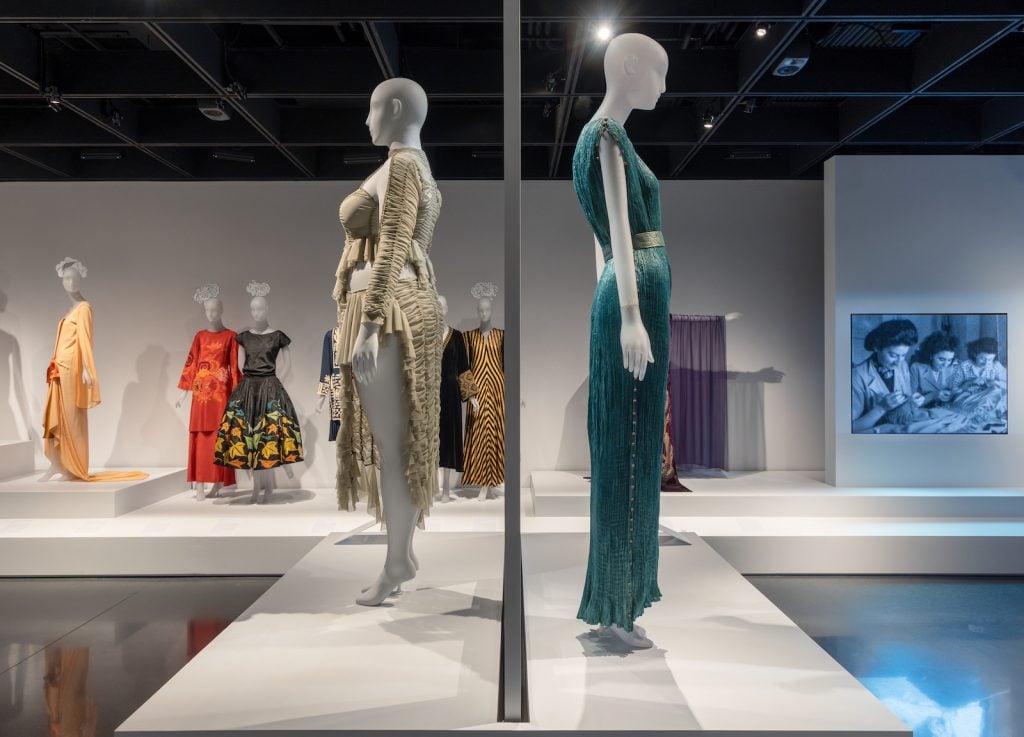
Gallery view, “Absence | Omission.” Left: Dress by Ester Manas and Balthazaar Delpierre for Ester Manas 2022. Right: “Delphos” gown, Adèle Henriette Elisabeth Nigrin Fortuny and Mariano Fortuny for Fortuny ca. 1932. Photo: © The Metropolitan Museum of Art.
But the show’s most jaw-dropping revelation is the true creator of the iconic silk pleated “Delphos” gown by the Venetian house Fortuny. Historians had long attributed the design to Mariano Fortuny, instead of to Henriette Nigrin, his partner and muse—and a skilled seamstress herself—who actually created it.
“The people at the Fortuny museum found the patent for the dress, which had a written note with something like, ‘My wife made this, but I don’t have time to put her name down for the pattern,’” Van Godtsenhoven said.
When Fortuny died in 1949, Nigrin sold the brand to an interior designer named Elsie McNeill. She said Elsie could do whatever she wanted with their designs, she just asked that they stop production of her beloved Delphos. “These garments are of my own creation, even more than many others,” she wrote. “I desire that no-one else take them over.”

Rei Kawakubo with models wearing Comme des Garçons, published in People, December 26, 1983.
Photo by Takeyoshi Tanuma. Image courtesy of The Metropolitan Museum of Art
“Women Dressing Women” concludes with a selection of makers working today, such as Comme des Garcons’ Rei Kawakubo, the Dior’s Maria Grazia Chiuri, and Jamie Okuma, the first Native American designer invited to join the Council of Fashion Designers of America. Yet it’s the older, rediscovered, and reconsidered gems that feel the freshest.
How lovely that the women who poured their blood, sweat, tears, and artistry into these astonishing pieces—that were in turn cherished so much by the women who donned them that they donated them to a museum to be preserved forever—finally get their chance to strut.
More Trending Stories:
Art Critic Jerry Saltz Gets Into an Online Skirmish With A.I. Superstar Refik Anadol
Your Go-To Guide to All the Fairs You Can’t Miss During Miami Art Week 2023
The Old Masters of Comedy: See the Hidden Jokes in 5 Dutch Artworks
David Hockney Lights Up London’s Battersea Power Station With Animated Christmas Trees
On Edge Before Miami Basel, the Art World Is Bracing for ‘the Question’
Thieves Stole More Than $1 Million Worth of Parts From an Anselm Kiefer Sculpture